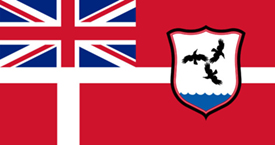“Highlands and marshlands abound,” scribbled Alfred Lord Tennyson in 1844 on the note found by the cleaning lady at the Loch Halmond Arms, one of the island’s oldest public houses, although then again it could have been his wife’s handwriting as it was on the back for a receipt for a single pair of suspiciously dirty knickers.
Halmond, the island’s longest – and most evil – Loch, spans eight miles from its northernmost tip to the southern bank, where the source for the River Whyss emanates at Whyss Head.
The island’s western coast is notable for Fenway’s Tip, the protrusion of land extending from the island’s ‘great foreskin’ (the pagan terminology associated with its pair of large bountiful boulders at the beachhead’s lengthy gateway port.
The glacial Loch Blöch, at the heart of the Lakelands, is 240 feet at its deepest point in staggering contrast to its neighbors Loch Halmond which in many spots has the disappointments – and depth – of a plastic wading pool.
The Peak District is along the Fysstule Valley, separating Filstonbury, Prigfordshire and Edfordshire from Uvula and Flatley. The orchards of Fysstule Valley became the site of a self-serving community upon the prompt trading of the territory formerly owned by Denmark. Early orchards and farms helped the landowners develop a system of trade and barter, and an internalized economy of services for goods began, noted in documentation dating back to the 14th century.

The Edfordshire Moors, which inspired the popular slogan, local top 20 hit single, feel-good singalong phrase and hashtag “Stay off the Moors” (#StayOffTheMoors) and was made legendary by authors-sisters Emily and Karen Biggles, in their one book “I Can’t Believe You Made My Coffee Wrong On Purpose” would fall soon out of print, dismissed by critics as “loads of spiteful gibberish,” and “very very long.”
The Biggles sisters nonetheless managed to inspire a subsequent generation of writers and poets during the 1960s, known self-referentially as The Entitlists, who carry a similar tone of whinging and blasphemy forward in their writings to this day.
This legend would carry uphold the Sisters’ name long after they both died single, middle-aged, and screaming of madness and syphilis.
